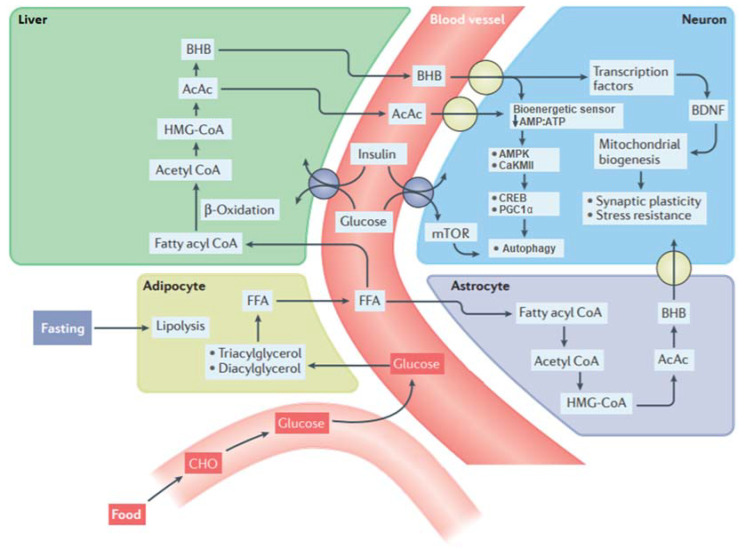Figure 2.
Biochemical pathways involved in the metabolic switch. During intermittent fasting, glucose levels drop and through the process of lipolysis, fats (triacylglycerols and diacylglycerols) are metabolized to free fatty acids (FFAs). These lipids are then transported to the liver where they through the process of β-oxidation and the intermediate stages acetyl CoA and HMG-CoA are transformed into the ketones: acetoacetate (AcAc) and β-hydroxybutyrate (BHB). BHB and AcAc are transported from the blood into the brain and then into neurons. In addition to ketones metabolized in the liver, astrocytes are also capable of ketogenesis, which may provide an important local source of BHB for neurons. The reduction in availability of glucose and elevation of ketones lowers the AMP: ATP ratio in neurons, which activates the kinases AMPK and CaKMII and, in turn, through the activation of CREB and PGC1α stimulates autophagy. In addition, lower levels of glucose during fasting decrease the activity of the mTOR pathway, leading to autophagy. BHB can also upregulate the expression of brain-derived neurotrophic factor (BDNF) and may thereby promote mitochondrial biogenesis, synaptic plasticity, and cellular stress resistance. IF leads to lower levels of circulating insulin in the blood, which enhances neuroplasticity and protection against metabolic and oxidative stress through the insulin/IGF signaling pathway. Retrieved from [18] with small modifications.

